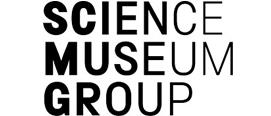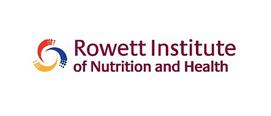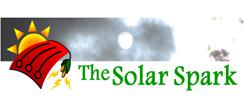Itch - Changing state: 9-11
|
Itch by Simon Mayo is a lovely book to introduce changes of state to children. The story centres around Itchingham Lofte, an element hunter who collects all the elements in the periodic table. Elements are chemicals in their simplest form and as Itch finds some are easy to get hold of (chlorine in household bleach, his brother’s titanium tongue stud), but others are much harder to find. He acquires a brand new element, which puts him in great danger. This new element can potentially be used as an ultra-clean power source that could change the world. Lots of people including his chemistry teacher and a multinational corporation want to get their hands on it. This makes for a thrilling action packed adventure story. and a huge that will do anything to get their hands on it, our ‘eye brow scorched’ hero and his family are propelled into an action packed terrifying adventure. Itch uses his knowledge of chemistry to help him on his adventure and provides a setting in which children can explore:
Key scientific vocabulary: solubility, dissolve, solution, soluble, insoluble, solute, solvent, particle, new material, burning, gas, element, Other fiction books with similar themes: Stormbreaker - Anthony Horowitz |
- ALL
- STEM Club
- Video
- Activity sheet
- External link
STEM Club
Kitchen Science
This collection by the Science Museum includes lots of easy step-by-step instructions for science activities and experiments that are safe and easy to do in the classroom or at home. The children might consider the nature of carbon dioxide and other gases.Throughout the novel Itch uses his element collection to help get himself out of scrapes. Chapter 23 Itch and Jack have been kidnapped by Mr Flowerdew. Itch manages to anesthetize his captors using Xenon gas. The children might compare how the Xenon gas behaved against the way that the carbon dioxide behaves. They could research a range of other gases and their uses.
Video
Is There Anyone Out There?
In chapter four we meet Bob Evert, a geologist working for South West mines. Geologists analyse rocks to see what they contain. Itch goes on work experience to the mines and is given a lump of tin, hewn out of the Cornish hills.
In this activity, the children become astrogeologists, analysing three soil samples to identify which one has the profile of Martian soil. There is lots of opportunity for children to make decisions within this activity - developing a raft of working scientifically skills such as making observations and drawing simple conclusions and using scientific vocabulary to explain their ideas.
Activity sheet
Sweet Chromatography
Itch has a piece of Victorian wallpaper. In those days arsenic green dye really did contain arsenic. This was the cause of a mass vomiting incident at school. Today, dyes are much safer, made from a mixture of minerals, they are used to add colour to a range of materials including fabrics and food. In this activity students use chromatography to separate the dyes in sweets - placing them on filter paper, adding water to dissolve the food colourings. They then record how many bands of colour were produced by each sweet.
Growing Crystals
This simple activity give clear instructions on how to grow salt crystals. Crystals are a special type of solid where the molecules fit together into an orderly repeating pattern. This pattern causes crystals to organise themselves into all sorts of unique shapes. Crystals have very flat sides called faces. They form geometric shapes - a lot of computer screens use liquid crystals in their displays because they produce a clear crisp image.
When solids (the solute) dissolve in water (the solvent), the solution becomes stronger, and as more solid dissolves a saturated solution is produced. This means that no more solute can be dissolved by the solvent. Hot solvents can dissolve more solvent than cool ones. If the solvent is left to cool down and the water evaporates, the solute molecules begin to link up and grow into crystals. The children could investigate growing salt and sugar crystals, comparing their shapes and measuring their rate of growth.
Plastic from Milk
Itch's dad Nicholas works on an oil rig. Although plastics are often made from polymers obtained from crude oil, polymers do exist naturally and could perhaps be adapted to work in new technologies such as solar cells.
Instructions on how to make plastic from vinegar and milk. Milk contains casein in a form that is soluble in water. Making the milk acidic by adding vinegar makes the casein insoluble so the milk separates into a solid and a liquid known as curds and whey. Removing the water by filtering and drying in an oven leaves the casein as a brittle plastic. The children could go on to investigate different plastics and think about their environmental impact http://practicalaction.org/plastics-challenge
Cabbage Chemistry
Itch inherits his grandfather's book - The Golden Book of Chemistry Experiments by Robert Brent. An old book apparently banned by the US government on the grounds that the projects were too dangerous for kids.
However this experiment is not dangerous and is a lot of fun. Here the children use red cabbage indicator, simple to make from boiled red cabbage, to test whether a range of household liquids are acidic or alkaline.The children could then order their findings from the most alkaline to the most acidic.
External link
Interactive Periodic Table
The Periodic Table was developed by Russian chemist Dmitri Mendeleev and was published in 1869.
Within Itch, there are lots of opportunities for children to consider where chemicals come from, how elements are discovered, who by; their properties and unique characteristics. They could research existing elements, find out about newly discovered elements or invent their own, just as Simon Mayo did with element 126.
These fun Elements Top Trumps are a great way in for children to start thinking about elements. Great for a range of games and maths activities, as well as a prompt for research.






